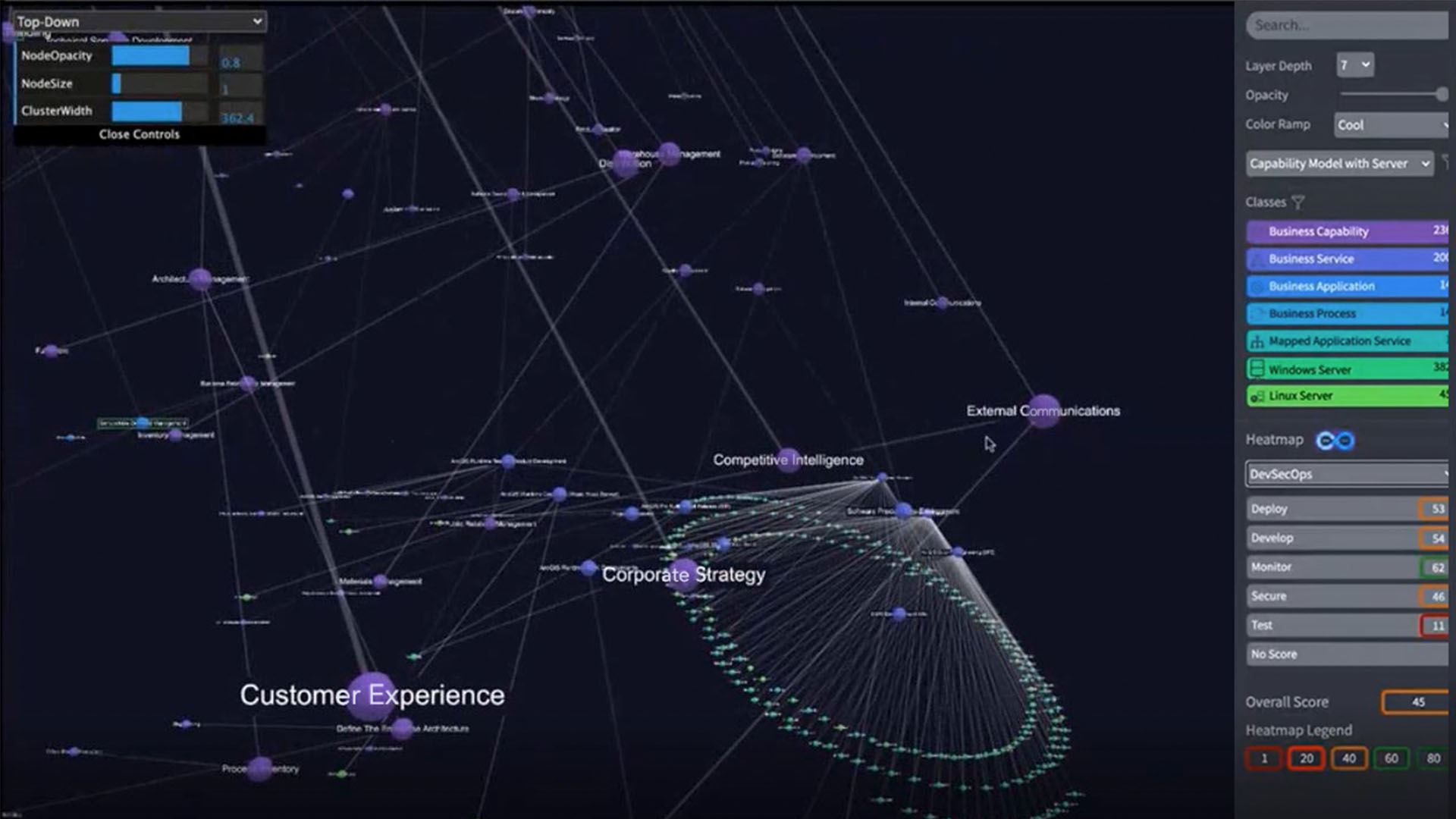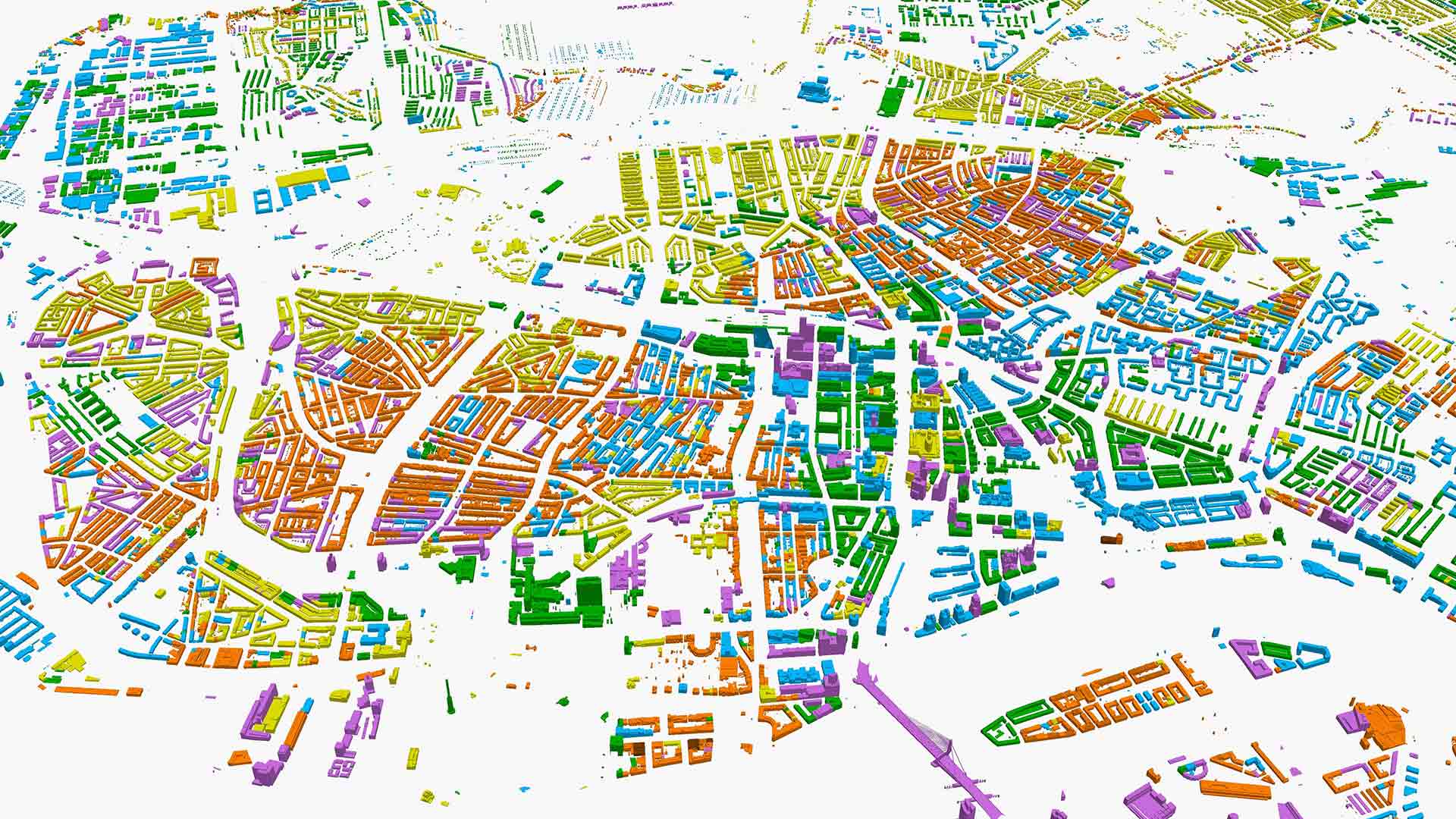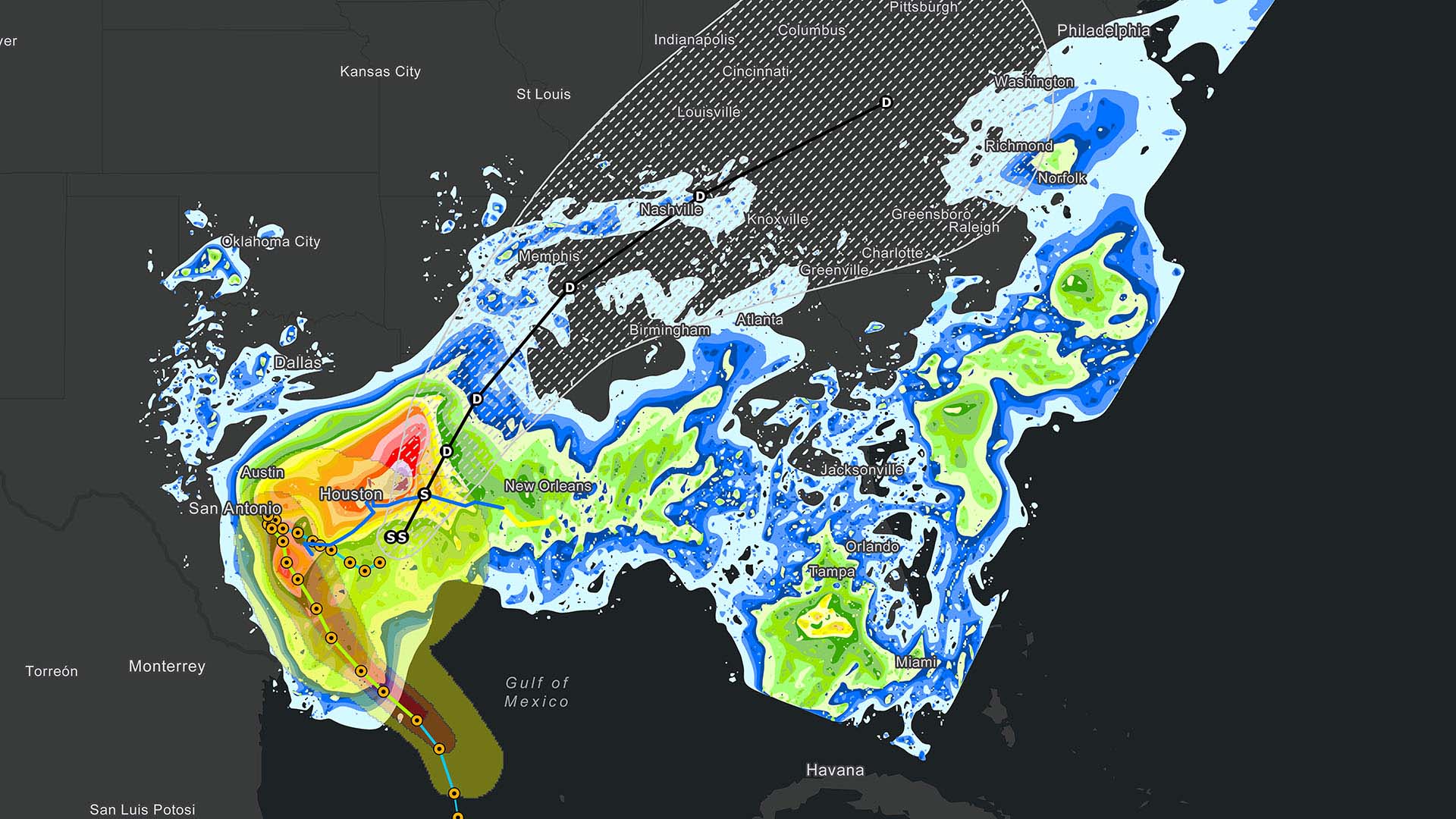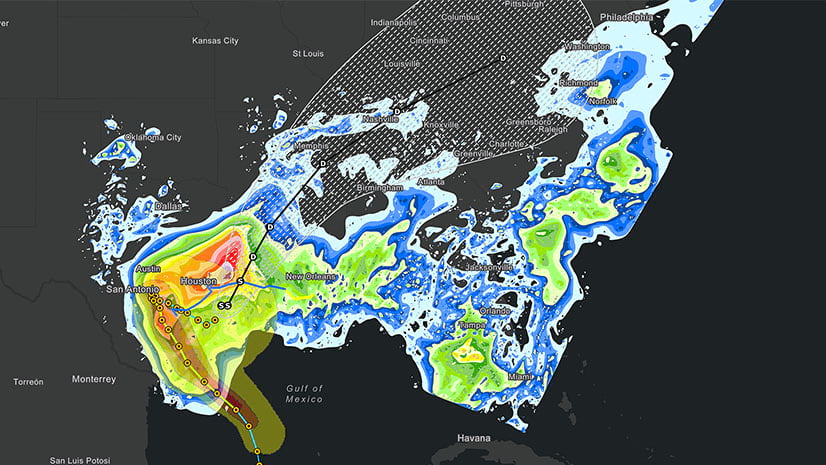Editor’s note: WhereNext’s NextTech series features videos of cutting-edge technology. Scroll down for a short demonstration of IT mapping. For a CIO’s perspective on this innovative IT technique, tune into this interview.
Fortune 500 companies are accustomed to using geographic information system (GIS) technology to map and manage stores, vehicle fleets, and commodities. Now, a few trailblazing organizations are exploring a revolutionary use of location intelligence that tech professionals are calling the holy grail of IT.
This cutting-edge form of IT mapping gives CIOs what they’ve sought for years: operational awareness of their IT infrastructure, helping them visualize workflows and stakeholders downstream from tech-based disruptions. It’s a digital twin that shows people, processes, and technology in a single view, and it’s attracting interest from an elite set of businesses including major tech companies and investment banks.
In our volatile age of extreme weather events, cybersecurity threats, and political unrest, CIOs who lack visibility into the relationships of their physical infrastructure and digital systems—including data centers, servers, switches, and personal computers—risk compromising business continuity. Not knowing which specific employees or customers are affected by a cyberattack or hardware or software outage can compound the effects of a crisis.
For instance, in the wake of flooding from Hurricane Ida this September, residents of Wilmington, Delaware found themselves unable to purchase prescriptions from most Walgreens stores over Labor Day weekend. The reason, as the Delaware Division of Public Health announced, was that heavy rains had knocked out the vendor that ran servers, Internet, and phones for the pharmacy chain, cutting off customer access to essential medicines.
IT Mapping Puts CIOs in the Driver’s Seat
This new IT mapping technique can empower business leaders to make smarter decisions and react faster when disruptions occur. A digital twin of technology assets and the network of people and processes that depend on them enables leaders to prioritize areas of need and craft targeted responses.
For example, in the event of a server shutting off due to flooding, a CIO could view an IT map showing the physical location of the hardware involved—down to the floor, room, and server rack. With a click, the CIO could pull up an IT map showing that e-commerce is the highest-priority system running on the downed server. From within the digital twin, the CIO can create a ticket to address the issue, alert sales and customer service units that e-commerce colleagues are offline, and organize email blasts and social media updates to notify customers that the online store is temporarily unavailable.
The digital twin of people, process, and technology helps CIOs act on security vulnerabilities before they threaten business continuity. With an IT map of the organization, a CIO sees which software and hardware is behind on patches, and how each component affects various departments and functions in the company and in its customer interactions.
With a clear map of affected assets and departments, executives know more and can act faster to minimize damage before or when problems arise, preventing costly disruptions.
The IT Mapping Secret Sauce
The video below offers a glimpse of how IT mapping works. A CXO sees a real-time picture of the organization’s technology infrastructure, from an ERP system down to the switches, servers, point-to-point circuits, and data centers that underpin it. Layering on external data related to events like floods, fires, or earthquake activity reveals the proximity of threats to these assets. Forecasting models can identify regions where hotter temperatures or sea level rise might threaten IT infrastructure in the future.
The IT mapping technology uses GIS software to zoom to a specific location, such as a data center in Las Vegas, and show the exact location and status of server racks or other assets like laptops. A CIO can use the map to take action by clicking on a server and initiating a request to have it fixed or replaced.
A business leader can use the IT map to trace the path from an enterprise resource planning (ERP) system to all the employees and processes it serves—from HR to finance to sales. The map-based digital twin traces ERP workflows all the way to the web servers and hardware that support it. If maintenance is needed on a web server, the CIO knows exactly which services will be impacted.
(Note: The video does not include audio.)
Executives can choose the IT mapping view that suits their purposes. As the video demonstrates, they might opt for a linear style or a “galactic” perspective—both provide a visual understanding of the breadth, interconnectedness, and complexity of the organization and its functions.
An Organizational Map, Down to the Pipes
This combination of GIS-based location intelligence and relationship mapping has far-reaching implications. Chief security officers are seeing more frequent distributed denial-of-service (DDoS) attacks, in which hackers compromise computers or IoT devices to create traffic jams that stall business operations. With IT mapping, security leaders see which servers, computers, software platforms, or services are being affected, and understand which assets are offline, vulnerable, or still operational. Having a visual format to understand these relationships can help leaders respond rapidly and shrink downtime. Cybersecurity investigators could also trace an internal attack back to the room or laptop where the invasion was launched.
The same mapping technique can be applied to departments such as facilities management through a simple visualization of physical assets. COOs and their teams get real-time alerts on the location of a burst pipe or jammed smart door lock, and quickly determine which employees and departments are affected by the disruption.
A location-aware IT map gives CIOs, COOs, and other top executives a simple visualization of the physical and digital—an organization’s people, processes, and technology—and reveals how systems and workflows impact employees and customers. That, in turn, drives companies toward the sustainable business continuity that customers expect of industry leaders.
The Esri Brief
Trending insights from WhereNext and other leading publicationsTrending articles

December 5, 2024 |

July 25, 2023 |

November 12, 2018 |

February 1, 2022 |

July 29, 2025 |
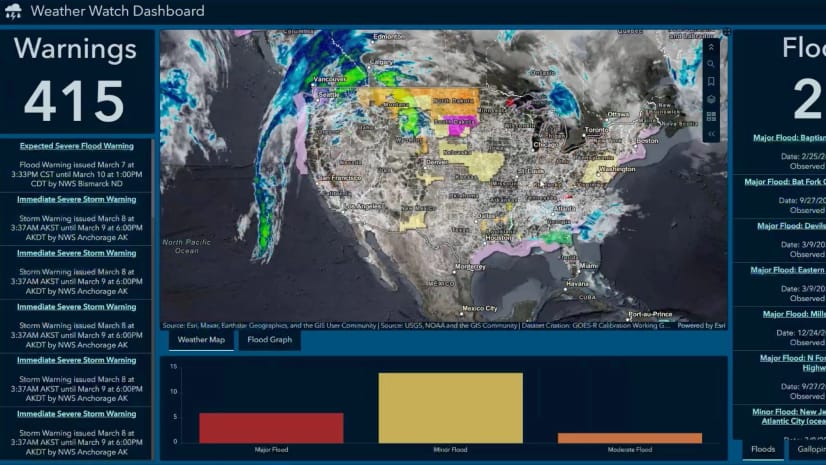
June 10, 2025 |
